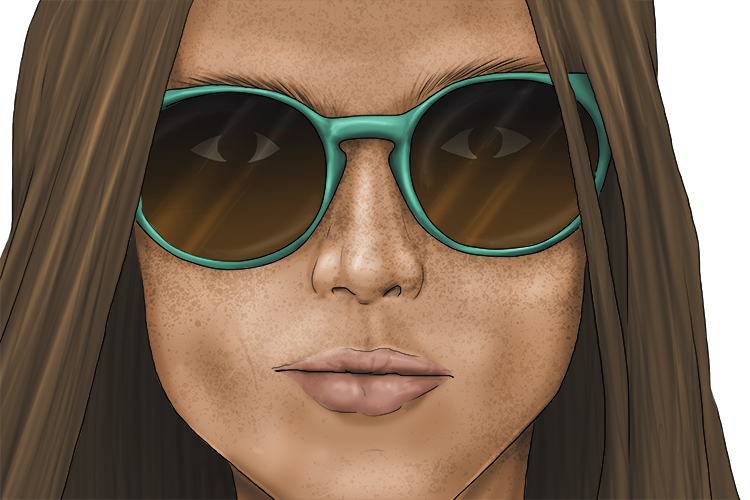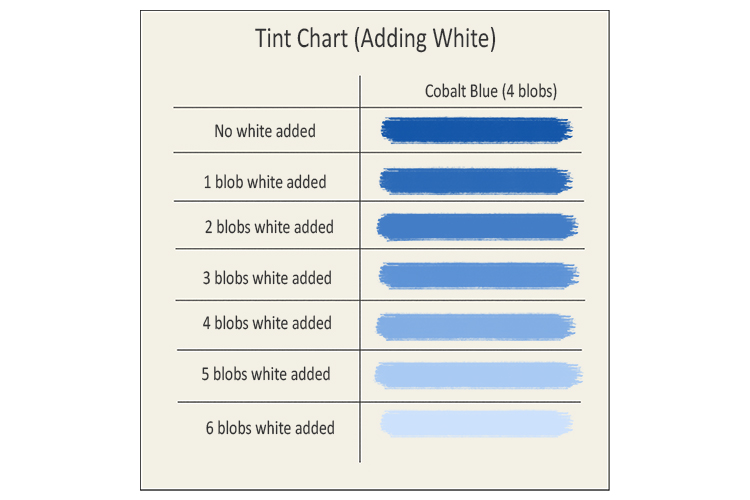Tint – Created by adding white to a colour
Different variations of tint are created by adding various amounts of white to a certain colour. Adding white to any colour can brighten the colour up but too much white can make the colour seem pale.
To help remember that tints are colours with white added, remember the following mnemonic.

She may have added a tint to her glasses, but I could still see the whites of her eyes.
TINT = ADD WHITE
The use of white to create tints is essential in painting for capturing colour in a realist or impressionist way. Vincent Van Gogh's dappled brushstrokes make it easy to see how white is added to his cobalt blue pigment in his painting Wheatfield Under Thunderclouds. From the pure cobalt blue at the bottom of the sky, you can see marks where it is lighter and lighter until it is almost entirely white for the clouds. Each of these colours is a tint of the original blue, all acquired by the addition of more white. The same technique has been used in the green field below.

Vincent Van Gogh, Wheatfield Under Thunderclouds, 1890
Some artists create charts of their key colours to see how their tube paints will mix with white and use these as a permanent reference.

For example, a tint chart based on a cobalt blue paint from the tube would appear like this:





